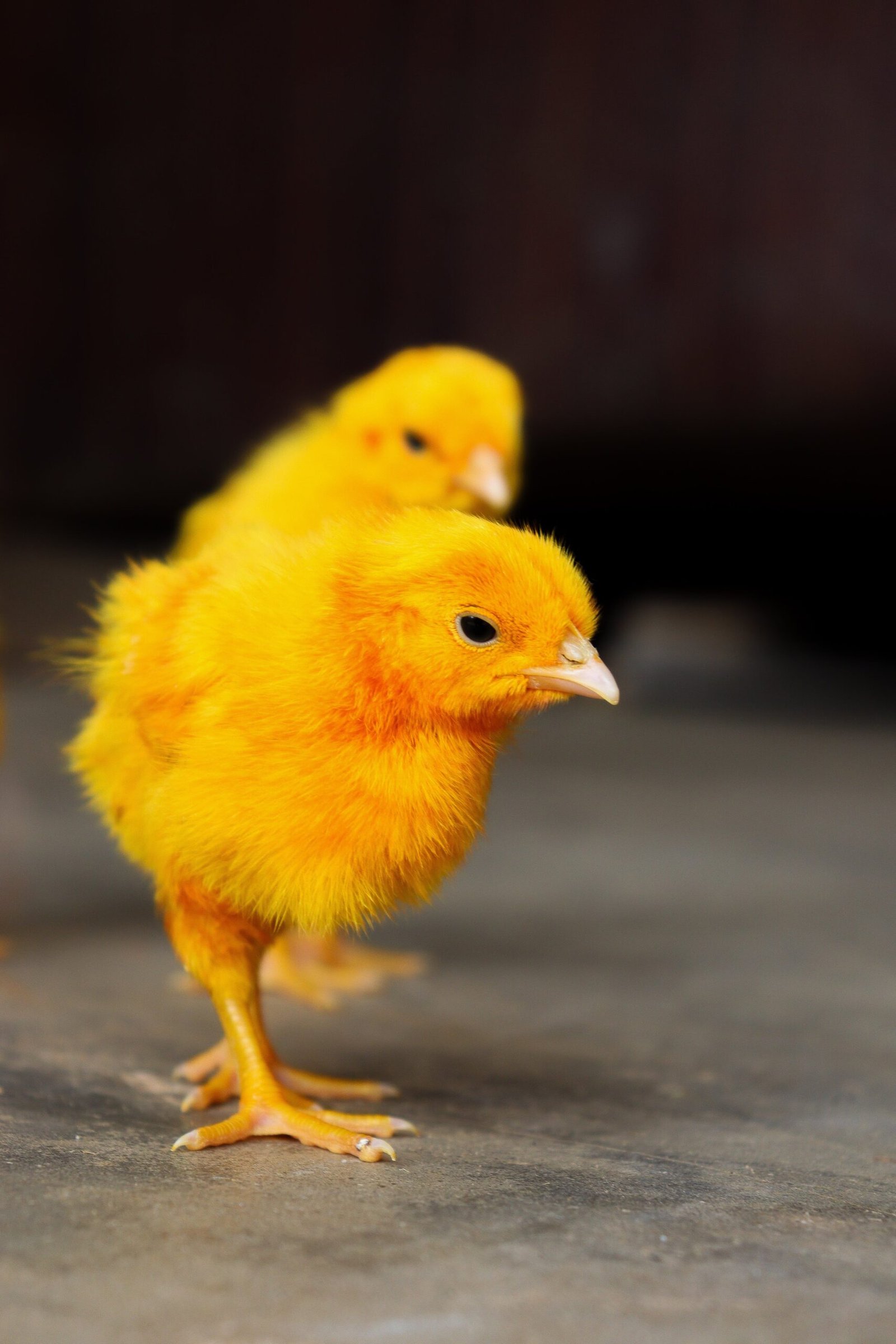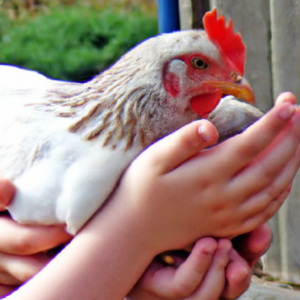
Have you ever wondered how chickens establish their social hierarchy within a flock? It’s a fascinating process that revolves around a concept known as the “pecking order.” In this article, we’ll explore the intricate dynamics of a chicken flock and uncover the factors that determine who gets to be at the top and who must settle for lower status. Understanding the pecking order is not only intriguing but also offers insights into the social behaviors of these feathered creatures. So, let’s dive into the world of chicken hierarchy and unravel its secrets together!

What is the pecking order?
Definition of the pecking order
The pecking order refers to the social hierarchy or ranking system that exists among chickens within a flock. It determines the dominance and submission of individual chickens, establishing an order of power and authority within the group.
Importance of the pecking order
The pecking order is crucial for maintaining harmony and stability within a chicken flock. It helps minimize conflicts and aggression by providing a clear structure of dominance and submission. Understanding the pecking order is essential for effective chicken management and ensuring the overall welfare of the flock.
How it affects chicken behavior
The pecking order greatly influences the behavior of chickens within a flock. It determines which chickens have access to food, water, and other resources, as well as their place in the social hierarchy. The pecking order also influences mating behaviors, nesting arrangements, and overall social interactions among the chickens.
Establishing the pecking order
Introduction to pecking order establishment
The establishment of the pecking order begins when a new chicken is introduced to an existing flock or when a group of chickens is raised together. The process involves a series of interactions and displays of dominance and aggression to determine each chicken’s rank within the hierarchy.
Age and size factors
Age and size play significant roles in the determination of the pecking order. Older and larger chickens tend to be more dominant and assert their authority over younger and smaller ones. The dominance hierarchy is often established based on physical attributes, with size and age being important factors in determining an individual’s social status.
Observing aggressive behavior
Aggressive behavior is a common indicator of the pecking order establishment. During this process, chickens may engage in pecking, chasing, and wing flapping to assert dominance or express submission. By observing these aggressive behaviors, it is possible to gain insights into the hierarchy within the flock.
Frequency of interactions
The frequency of interactions between individual chickens also plays a role in establishing the pecking order. More frequent and intense interactions often indicate a higher position in the hierarchy, while less frequent or submissive interactions suggest a lower rank.
Food and resource access
Access to food and resources is a key factor in determining the pecking order. Dominant chickens typically have priority access to food, water, and other resources, while submissive chickens have to wait their turn. This aspect of the pecking order is important for maintaining the overall well-being and welfare of the flock.

Signs of pecking order establishment
Dominant behavior
Dominant behavior is easily recognizable within a chicken flock. Dominant chickens often display confidence, walk with a head held high, and assert their authority over other flock members. They are usually the first to eat, drink, or explore new surroundings. Their dominant behavior helps them maintain their higher position in the pecking order.
Submission and avoidance
Submission and avoidance behaviors are exhibited by chickens lower in the pecking order. These chickens may crouch, lower their heads, or move away from dominant chickens to demonstrate their lower rank. They often allow the dominant chickens to have priority access to resources and avoid confrontations or displays of aggression.
Feather pecking and aggression
Feather pecking and aggression can be signs of both dominance and submission within the pecking order. Dominant chickens may peck at the feathers of subordinate chickens as a form of asserting their authority. Subordinate chickens may exhibit feather loss from such pecking, further confirming their lower position in the hierarchy.
Rooster’s role in the pecking order
In a flock with a rooster, the rooster usually holds a prominent position in the pecking order. The rooster often acts as the leader, maintaining order within the flock, and protecting the hens from potential threats. The other chickens typically respect the rooster’s authority and follow his lead.
Methods for determining the pecking order
Behavior observations
Observing chicken behavior is one of the most common methods for determining the pecking order. By closely monitoring interactions within the flock, such as pecking, chasing, and submissive behaviors, it is possible to identify the dominant and submissive individuals.
Social network analysis
Social network analysis involves studying the social interactions and relationships between individual chickens within a flock. By mapping out these social connections, it becomes possible to identify the key players and the network structure, thereby understanding the pecking order.
Introducing new members
Introducing new chickens to an existing flock is a practical method for determining the pecking order. By observing how the existing members react to the newcomers, it becomes evident who holds higher positions in the hierarchy and who submits to the new individuals.
Mimicking natural circumstances
Mimicking natural circumstances, such as creating a new environment or changing the available resources, can also help determine the pecking order. When a flock is placed in a new setting or given limited resources, their natural instincts and hierarchical tendencies come into play, revealing the pecking order.

Behavioral indicators of pecking order
Pecking and aggression
Pecking and aggression behaviors are direct indicators of the pecking order. Dominant chickens often peck at or chase subordinates, while submissive chickens allow themselves to be pecked without retaliating. These behaviors reinforce the hierarchical structure within the flock.
Feeding hierarchy
The feeding hierarchy is another behavioral indicator of the pecking order. Dominant chickens have priority access to food, while submissive ones wait their turn. The higher-ranked individuals usually eat first and have access to the best feeding spots, ensuring their nutritional needs are met.
Nesting order
Nesting order is determined by the pecking order. Dominant chickens often claim the preferred nesting spots and may chase away lower-ranked individuals. Higher-ranked hens have the advantage of accessing the best nests and thus lay eggs in more desirable locations.
Perching preferences
Perching preferences also reflect the pecking order. Dominant chickens usually occupy the highest and most desirable perches, while subordinate chickens settle for lower or less comfortable perching spots. Perching preferences correlate with the social ranking and dominance within the flock.
Dust bathing hierarchy
Dust bathing, a natural behavior in chickens, can also be influenced by the pecking order. Dominant chickens tend to take the best dust bathing spots and may prevent subordinates from joining. The hierarchy within the dust bathing area reflects the overall social dynamics of the flock.
Challenges and changes in the pecking order
Newly introduced chickens
When newly introduced chickens are added to an existing flock, it disrupts the established pecking order. The new chickens must establish their rank within the hierarchy, leading to potential conflicts with the existing flock members. This process often involves displays of aggression and submissive behaviors until a new pecking order is established.
Age-related shifts
Age-related shifts in the pecking order are common as young chickens grow and mature. As they reach adulthood, they may challenge the older and more established members of the flock for higher positions in the hierarchy. These shifts can sometimes lead to temporary disturbances and alter the dynamics of the pecking order.
Disruption of established order
Significant disruptions, such as the loss or removal of a dominant chicken, can lead to a rearrangement of the pecking order. When a dominant individual is no longer present, the remaining chickens may engage in power struggles to fill the vacant position, causing temporary disruptions and changes in the hierarchy.
Managing aggression and conflicts
Aggression and conflicts within the pecking order can be managed by providing appropriate resources, such as ample food and sufficient space. Ensuring that each chicken has its own space and access to resources reduces the likelihood of aggressive behavior. Additionally, providing distractions and environmental enrichment can help redirect aggression and minimize conflicts within the flock.

Social dynamics within a chicken flock
Hierarchy within subgroups
Within a larger chicken flock, smaller subgroups may form their own hierarchies. These subgroups may consist of individuals with similar ranks within the overall pecking order. Subgroup hierarchies allow for smaller social interactions and can help to better manage conflicts and maintain stability within the larger flock.
Top-down control
The pecking order operates based on top-down control, where dominant chickens establish and maintain their positions of authority. The higher-ranked individuals control access to resources, leading to a structured distribution within the flock.
Individual variations in aggression
While the pecking order determines the overall hierarchy, individual variations in aggression can exist within a flock. Some chickens may display more aggressive behavior, even within their designated rank, while others may be more submissive. These individual differences can influence the behavioral dynamics within the flock.
Leadership and followership
The pecking order establishes both leaders and followers within a chicken flock. Dominant chickens take on the role of leaders, maintaining order and providing guidance to the subordinate individuals. On the other hand, submissive chickens establish themselves as followers, conforming to the hierarchy and following the lead of the dominant members.
Implications for chicken management
Creating balanced flocks
Understanding the pecking order is vital for creating balanced flocks with a harmonious social structure. When introducing new chickens, it is important to consider their compatibility with the existing flock and monitor their integration into the hierarchy. By ensuring a well-balanced flock, aggression and stress can be minimized.
Avoiding overcrowding
Overcrowding can lead to increased aggression and stress within a chicken flock. Providing sufficient space is essential for maintaining a healthy pecking order and reducing conflicts. By avoiding overcrowding, chickens have more room to establish their territories, reducing the likelihood of aggressive behavior.
Providing sufficient resources
Adequate access to food, water, and other resources is important to maintain a stable pecking order. Ensuring there are enough resources available for all flock members helps reduce competition and aggression. Sufficient resources also contribute to the overall welfare and productivity of the flock.
Reducing stress and aggression
Managing stress and minimizing aggression within a chicken flock is essential for their well-being. By promoting a calm and stress-free environment, individual chickens are less likely to engage in aggressive behaviors. This can be achieved through proper housing, environmental enrichment, and appropriate flock management practices.
Understanding the pecking order for human benefit
Optimizing egg production
Understanding the pecking order allows for the optimization of egg production within a chicken flock. By targeting resources and management strategies towards the higher-ranked individuals, egg production can be maximized. This knowledge enables farmers to focus on providing the best conditions for the most productive hens within the flock.
Minimizing feather loss and injuries
Feather loss and injuries often result from aggression within the pecking order. By understanding the hierarchy and managing aggression, it is possible to minimize these issues. Ensuring each chicken has the opportunity to escape or hiding places can reduce feather loss and injuries caused by aggressive pecking.
Improving overall welfare
An understanding of the pecking order is crucial for improving the overall welfare of chickens within a flock. By designing an environment that supports natural hierarchies and minimizing stressors, individual chickens can lead healthier and more content lives. This knowledge contributes to creating a positive and nurturing environment for the flock.
Utilizing social hierarchy in breeding programs
The pecking order can be utilized in breeding programs to select desirable traits or enhance specific genetic characteristics. By identifying and breeding from dominant or higher-ranked individuals, it is possible to pass on those desired traits to future generations. Utilizing the social hierarchy can enhance breeding programs and improve the overall quality of the flock over time.
Conclusion
Understanding and managing the pecking order within a chicken flock is essential for effective chicken management and ensuring the overall welfare and productivity of the flock. By recognizing the signs of the pecking order establishment, determining individual rankings, and promoting a balanced social structure, farmers and chicken owners can create a harmonious environment that minimizes stress, aggression, and promotes the well-being of their chickens. Additionally, understanding the pecking order provides valuable insights for optimizing egg production, managing aggression and conflict, and utilizing the social hierarchy in breeding programs. By respecting and working with the dynamics of the pecking order, chickens can thrive and flourish in a supportive and well-managed flock.







